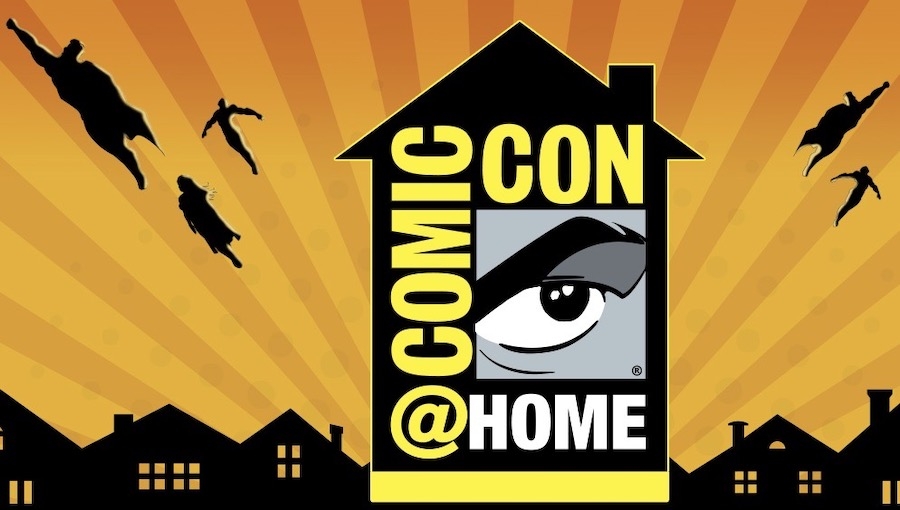Before there was CGI, there was Ray Harryhausen. Before dinosaurs roamed Jurassic Park, they were battling it out in the Valley of Gwangi. Before Bruce Campbell fought a battalion of medieval skeletons in Army of Darkness, Jason and the Argonauts were fighting off sword-wielding skeletons of their own. Stop-motion animation may seem primitive by today’s standards, but the movies Ray Harryhausen made, and the creatures he brought to life, are some of the most iconic in cinema history.
Last month would have been Harryhausen’s 100th birthday. In celebration of his life and legacy, Comic-Con @ Home held a panel on Friday, July 24th, to showcase some of his old work. It featured his daughter, Vanessa Harryhausen, surrounded by a whole career’s worth of effects models, both familiar and obscure. The panel also featured John Walsh and Connor Heaney, trustee and collections manager, respectively, for the Ray and Diana Harryhausen Foundation.
Comic-Con has, of course, been a bit difficult this year. Watching panels online isn’t the same as attending them in person; however, they say that when life gives you lemons, you should make lemonade. A panel like this wouldn’t have been possible at an in-person convention. The pieces that Vanessa Harryhausen presented are old and delicate. They couldn’t just be wheeled into Hall H and spread on a table, without serious risk of damage. But with an online panel, we can browse the whole collection and get an incredible behind-the-scenes look at the man’s greatest achievements.
The Ray Harryhausen collection will soon be on display at the National Gallery of Scotland in Edinburgh. How did Scotland get so lucky? Well, his wife, Diana Livingstone Bruce, was descended from famous Scottish explorer and physician David Livingstone (“Dr. Livingstone, I presume?”), and Harryhausen even created a sculpture of Dr. Livingstone which is on display in Scotland.
The majority of the panel consisted of John Walsh and Vanessa Harryhausen going through the various pieces, spread out in Vanessa’s home, and talking about their significance, both to cinema, and to Vanessa personally. For instance, her favorite piece is the elephant from The Valley of Gwangi, affectionately named Pinky. Apparently, Vanessa used to cuddle with it as a child.
Most of the models are a lot smaller than they appear on film. With a few minor camera effects, you can make a tiny creature appear to tower over the landscape and all the people below; however, there are a select few pieces that are life-sized, most notably the mask of the Minaton from Sinbad and the Eye of the Tiger. A small, stop-motion model of the mechanical minotaur exists, as well, but for some scenes, a man actually put on the mask and played the part. That man? An uncredited, pre-Star Wars Peter Mayhew.
The panel noted how amazing it is that so many of these old models, from 40, 50, and 60 years ago, still exist. Harryhausen’s last major film, Clash of the Titans, came out around the same time as Flash Gordon. Almost none of the old props, costumes, set pieces, etc. from Flash Gordon are still around, except those select few that have been found and preserved by the fans. But for Clash of the Titans, all of the models, notes, drawings, scripts, and more, still exist as part of the Ray Harryhausen collection. The same is true of just about all of his other films, as well, dating back to the 1950s. Harryhausen never threw anything away.
He did, however, sometimes repurpose his old models. As the model for Calibos from Clash of the Titans stood in the foreground of the collection, Walsh pointed out that it was created by cannibalizing the model of Trog, from Sinbad and the Eye of the Tiger. But Vanessa proudly displayed another model of Trog, which her father had remade after sacrificing the first one. So truly, almost nothing is lost.
That doesn’t mean pieces don’t wear out, though. Some were damaged over the course of the films they appeared in, while others have simply fallen apart in the often 50+ years since. Fortunately, Alan Friswell, a talented effects designer in his own right, has worked meticulously to restore many of them to their former glory. In fact, Walsh commented that many of these pieces could probably be used again as practical animation effects—though of course they won’t, for fear of further damage. Their day is done, and now they’re strictly used for display purposes.
Ray Harryhausen’s visual effects gave us some of the most iconic moments in cinema history. He also inspired many of the other visual effects artists who came after him. Makeup effects artist Rick Baker once sent Ray a mask he’d made, in replica of the cyclops from The Seventh Voyage of Sinbad. Ray wrote back and encouraged him to continue pursuing his art, and the two kept in touch for a long time after that. With Ray’s encouragement, Rick Baker went on to win multiple makeup effects Oscars, for such films as Men in Black and Ed Wood. Harryhausen’s influence is undeniable, and all of these years later, his films still stand out as impressive feats.
It was great to watch Ray Harryhausen’s legacy being celebrated. Someday, when we’re all able to travel again, I hope to be able to go to the National Gallery of Scotland in Edinburgh and see these models in person. Until then, I’ll just content myself with rewatching his films.
If you’ve enjoyed this panel coverage of Comic-Con @ Home, you can check out the full panel at this link!

